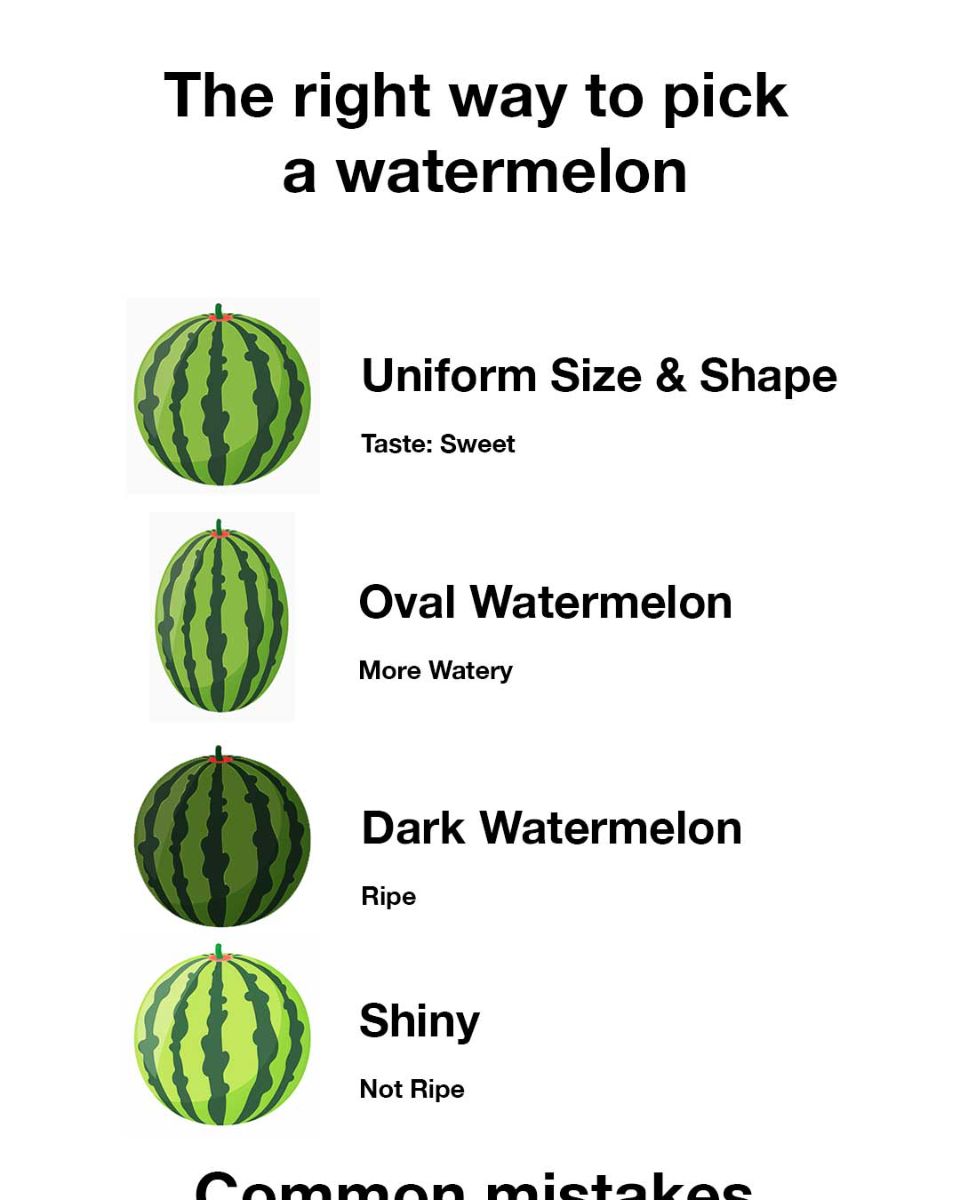Step 7: Stem Check
If the watermelon has a stem, make sure it’s brown and dry. A green stem can indicate that the fruit was picked prematurely.
Common Mistakes Made When Picking Watermelon
Ignoring the Field Spot:
Mistake: Choosing a watermelon without checking the field spot (the creamy yellow patch where it rested on the ground).
Why it matters: A prominent, creamy yellow field spot indicates the melon ripened on the vine, leading to better sweetness.
Not Checking the Sound:
Mistake: Picking a watermelon without giving it a tap.
Why it matters: A ripe watermelon produces a deep, hollow sound when tapped, indicating it’s juicy and ready to eat.
Overlooking the Shape and Uniformity:
Mistake: Ignoring the shape and uniformity of the watermelon.
Why it matters: A symmetrical watermelon without irregular bumps usually indicates consistent growth and ripeness.
Selecting Based on Size Alone:
Mistake: Assuming bigger watermelons are always better.
Why it matters: Size doesn’t necessarily correlate with quality. Medium-sized watermelons often have better texture and flavor.
Not Inspecting the Surface:
Mistake: Failing to check for blemishes, cuts, or bruises.
Why it matters: Surface imperfections can indicate damage or poor handling, affecting the fruit’s quality.
Choosing Based on Color Alone:
Mistake: Picking a watermelon solely because of its dark green color.
Why it matters: While a dark green color can be a good sign, it should be combined with other factors like the field spot and sound for the best results.
Forgetting to Check the Weight:
Mistake: Not comparing the weight of the watermelon to its size.
Why it matters: A ripe watermelon should feel heavy for its size, indicating high water content and juiciness.
Not Considering the Season:
Mistake: Buying watermelon out of season.
Why it matters: Watermelons are typically best in the summer months when they are in season, ensuring optimal ripeness and flavor.

